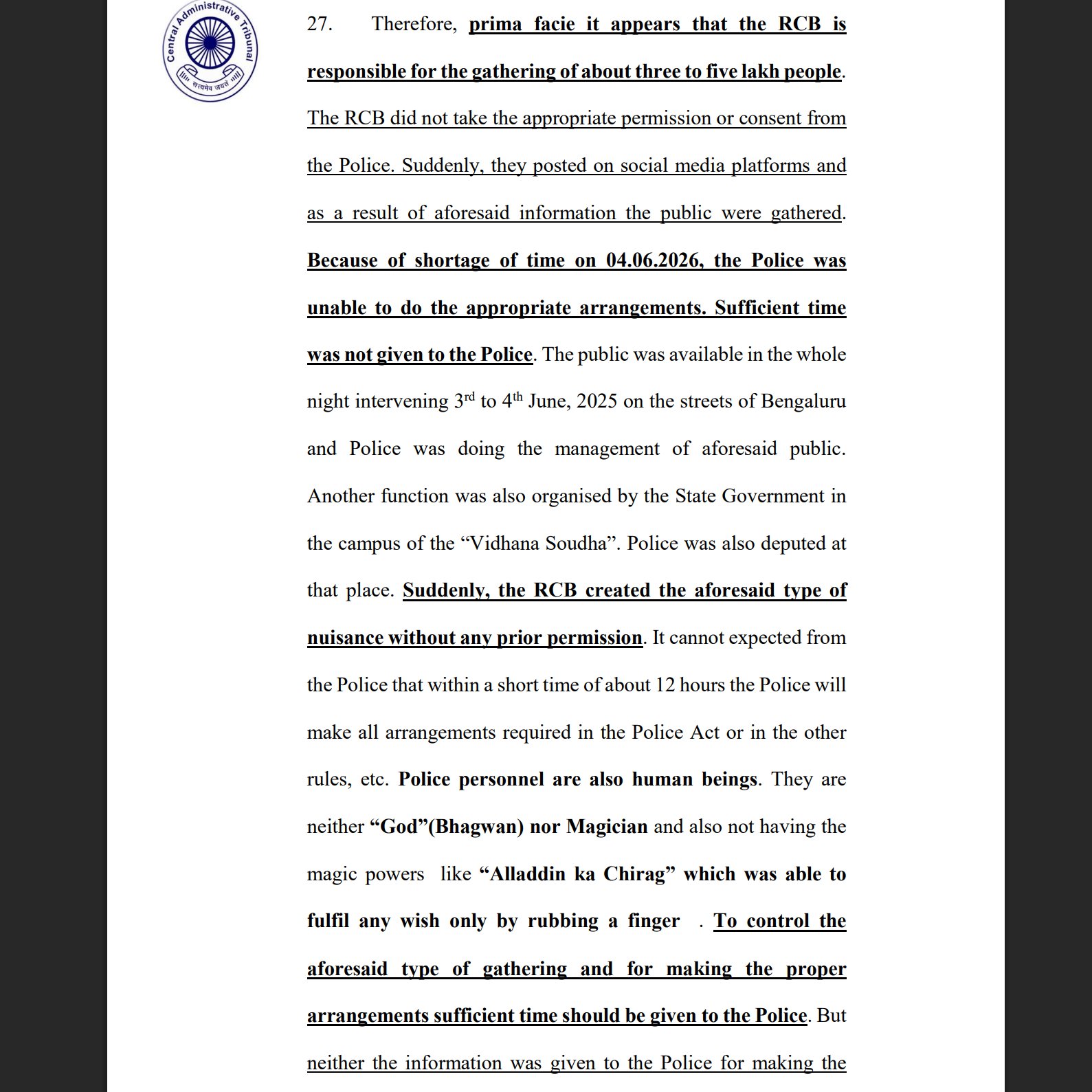Royal Challengers Bengaluru invited tens of thousands to its IPL victory parade without securing police approval or filing proper applications, the Karnataka government has said in a report submitted to the High Court, holding the organisers responsible for the stampede that killed 11 people outside Chinnaswamy Stadium last month.
The report, made public on court orders despite state officials requesting confidentiality, paints a damning picture of mismanagement and unilateral planning by RCB and its associates, including the Karnataka State Cricket Association (KSCA) and event partners.
On 3 June, the day RCB won its maiden IPL title after 18 seasons, the team’s management merely “informed” the Cubbon Park Police Station of a possible celebratory event, rather than formally seeking permission.
“This was in the nature of an intimation, not a requisition for permission as required under the law,” the report states. No applications were submitted in the prescribed format, and there was no information about expected crowd size, security arrangements or traffic control.

Also read: BCCI seeks written replies from RCB, KSCA over B'luru stampede
Despite lacking approval, the organisers made several public announcements via social media, calling on fans to join the parade. At 7.01am on 4 June, RCB posted a photo inviting the public to join a victory parade starting at Vidhana Soudha and ending at Chinnaswamy Stadium. A video featuring Virat Kohli, shared shortly before 9am, reiterated the call.
By the time RCB posted that passes were “limited” and available online, at 3.14pm, millions had already seen the initial invite implying open access. “Until this point, there had been no information regarding the disbursement of passes, implying that the event was open to all,” the report notes.
Authorities estimate over 3 lakh people turned up, based in part on elevated metro ridership—9.66 lakh commuters versus a daily average of 6 lakh. Huge crowds lined the 14km stretch from HAL Airport to the team’s hotel, requiring emergency redeployment of police resources across the city.
Chinnaswamy Stadium’s capacity is 35,000, a fraction of the crowd that surged at its gates by 3pm on 4 June. With entry mismanaged and gates left unopened, people forced their way in, breaking gates 1, 2 and 21. Several others, including gates 02, 2A, 6, 7, 15, 17, 18 and 20, saw “sporadic stampedes”, the report says.
Police at the scene tried to contain the chaos, but the organisers’ failure to coordinate had already unleashed a crowd far beyond safe capacity.
Calling off the event entirely could have triggered further unrest, the state told the court. “This tactical decision considered the evolving ground situation, crowd psychology, the massive scale of gathering, and the information asymmetry amongst the assembled masses,” the report states. “It is common and known in Law & Order situations, that cancellation of anticipated events can incite the crowd tremendously and lead to widespread mob violence.”
The High Court has taken note of the report and may issue further directions after its next hearing.


